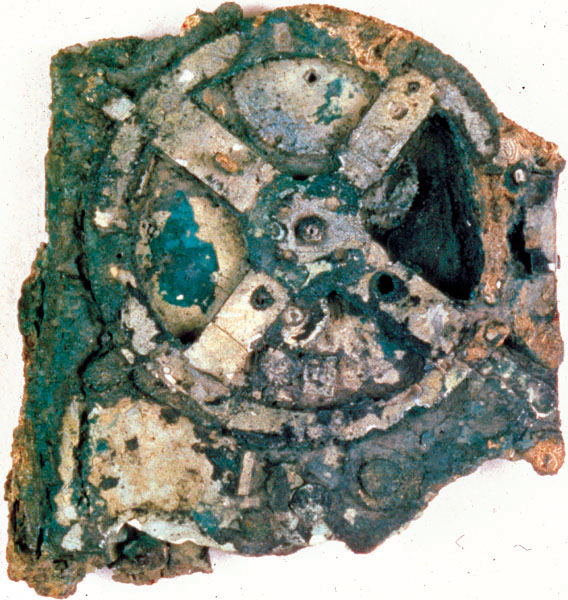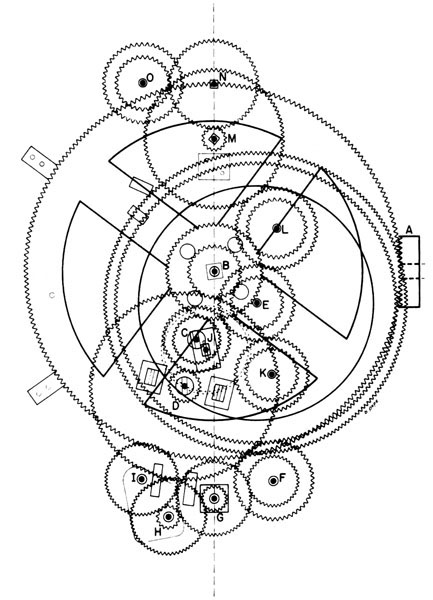Ancient Life: Heavens!
An ancient model of the cosmos


Just over a century ago sponge divers off the coast of Antikythera, an island northwest of Crete, discovered a first-century B.C. Roman shipwreck. They later returned to the site, accompanied by archaeologists, and spent the next year diving 200 feet down to the shipwreck (without scuba gear or air tanks) to recover amphoras, statues, jewelry, coins and pottery.
The divers also brought up something puzzling: a complex mechanical device (now on display in the National Museum of Athens) consisting of a wooden frame and 32 bronze gears—some of them with fragmented Greek inscriptions.
One of the gears was inscribed with text from a parapegma, or astronomical calendar, similar to one produced in Rhodes in 77 B.C. It is likely that the Antikythera mechanism was manufactured in Rhodes, which was a center for astronomical thought during this period. (Rhodes had been home to Hipparchus [c. 190–135 B.C.], who catalogued the positions of 1,080 stars and calculated the length of the solar year to within seven minutes.)
Scientists early on speculated that the mechanism was an astrolabe—an instrument used to determine the altitude of the sun and the stars—though the earliest known astrolabe was from the seventh century A.D.
Already a library member? Log in here.
Institution user? Log in with your IP address.

